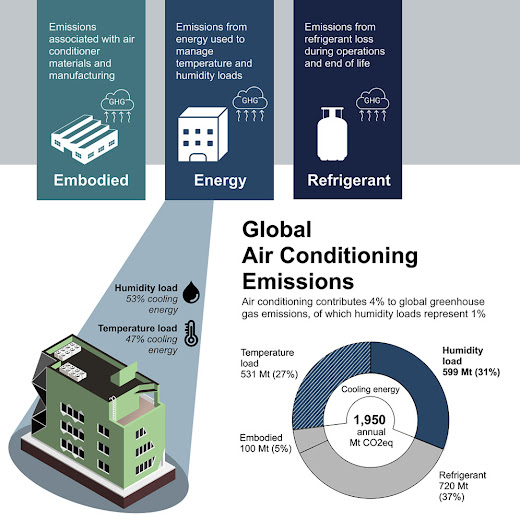Controlling humidity has a big impact on greenhouse gas emissions
The increasing need to cool
the air in our built environment is both a cause and an effect of
climate change. Air conditioning accounts for a large portion of global
greenhouse gas emissions today, which is estimated
at 3.9%; however, the role that humidity plays in these emissions is often
overlooked. The emissions associated with reducing air humidity (i.e.,
removing water vapour from air) are larger than emissions associated with
reducing air temperature (i.e., cooling air). The research team have
shown how dramatically humidity-related emissions will increase
with rising cooling demand around the world. They have calculated the minimum
separation energy for removing water vapour from air and find that this is at
least an order of magnitude less than the processes used today. New
technologies that split this cooling and humidity control problem into two
processes show potential to improve efficiency by 40% or more. One way to do
this is the use of liquid desiccant-based cooling. The researchers point out
that the use of liquid desiccants fundamentally changes the way humidity is
controlled and has theoretical efficiency limit that is 10 times higher than
the vapor compression cycle alone. A hypothetical technology — at only half
this new limit — would reduce cooling-energy emissions by 42% in 2050, with the
equivalent of avoiding 2,460 million tons of carbon dioxide annually.




Comments
Post a Comment